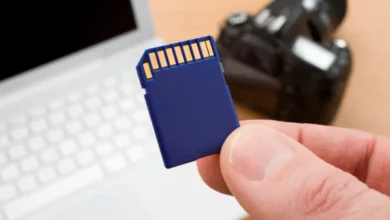Cyber Forensics – Complete Investigation Process
What is Cyber Forensics Investigation and How it is been used?

Cyber forensics is the process of extracting data as a form of evidence on the basis of a crime using an electronic device, incorporating proper investigation rules and guidelines, and properly analyzing the information required to appear in court.
The main goal of cyber forensics is to analyze the criminal who is responsible for the crime and what exactly happened while documenting the entire investigation process.
In addition, Cyber Forensics performs multiple activities such as restoring the deleting data, locating a particular device, getting the data of phone calls, identifying the device and catching the time that the user has spent, and many other activities.
Why Cyber Forensics is necessary?
It is important as it can carry out accurate results related to a crime within a limited time. Also,
1. Helps in collecting the right evidence of a particular crime scene.
2. Allows rescuing innocent people implicated in a crime.
3. Not only resolves digital crime but can also solve real-world crimes like thief attacks and murders.
4. It is easy to find the attackers who had attacked multiple businesses.
5. Can save the money and time of multiple organizations by investigating the cases.
6. Makes the public aware of the unauthorized data sent to them using phone calls, messages, and social media.
7. Furthermore, it guides people on how to stay away from different crimes and Cyberattacks to secure their businesses.
Cyber Forensics Investigation Process
There are not only single but multiple Cyber security cases rising in India day by day and to resolve them, we need an expert who can be able to work on the criminal actions properly. According to Anuraag Singh, Cyber Forensic Trainer, the investigation process consists of these steps to reach the final conclusion:
- Identification: Firstly, we need to identify the proof that we have to initiate the investigation. Analyzing where we get that proof and where it is actually contain. From a wide range of areas such as mobile phones and social media of an individual, data collection is been done.
- Data Integrity: After identification, it is important to preserve the data in a precise manner and store them in a safe place where no one can misuse the data. It is also store in one place to keep it away from magnetic devices.
- Analyzation: Then, we need to analyze the data properly. Here, professionals restore deleted files and inspect the recovered data, and find the document that has been used by the criminal to erase the data. And, the experts need to put much of their time and effort to carry out the information.
- Authorization: After that, a report is managed that provides information about the restored data and the current data available. By using this data evidence, it is easy to recreate the crime scene and observe the entire place.
- Representation: At the end, all the evidence will be present in front of the high court as proof and explains the entire single piece of information properly so that it is possible to find out the criminal.
His Efforts
Anuraag Singh is serving his nation worldwide with his Cyber instructions programs and guidance. He had provided more than 200 workshops to different colleges, schools, and agencies that are working to investigate cases. And with his dedicated efforts, he is Simplifying Technology with SysTools.
Abilities to Become Cyber Forensics Expert
Most people think that it is easy to become a Cyber Forensics Expert just by learning some information but only dew understand that it requires a lot of skills. Some of the skills are:
1. An adequate knowledge of various technologies, network hacks, and devices such as mobile phones and computers is enough.
2. A person should be attentive while doing a particular activity and can be able to investigate a large amount of data as evidence or proof.
3. Appropriate validation of reports and observations of the data should be preserved throughout the process when analyzing a particular amount of data.
4. Good communication skills are required so that every single piece of information is shown clearly while presenting evidence or evidence before the court.
5. Must be aware of investigation laws and basics of Cyber security.
6. Can be able to work in a challenging environment with having the ability to resolve multiple issues.
Techniques used by Cyber Forensic Investigators
There are various utilities that basically used to analyze the data and with different techniques which are:
1. Restoring File data
It usually recovers entire data deleted from a single device and it makes it possible for experts to collect more evidence.
2. Steganography in Reverse:
Since Steganography is a way of hiding information in various technological devices. So, professionals used a process opposite of this to grasp the hiding data in a unified manner.
3. Cross–Drive Analysis:
It usually operates on information that has been stored on multiple computer drives. Experts analyze the information and related it to other references to preserve the data and that allows them easy to preserve more relevant statements.
4. Live Analysis
This is done when the system is running or working on some specific information. Moreover, this process usually goes through the complete OS system and analyzes the data stored in the RAM.
YOU MIGHT ALSO LIKE: Export Mailbox from Exchange 2013 to Office 365





